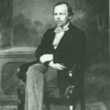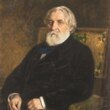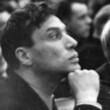August 1914
(Book)
Copies
| Location | Call Number | Status | Due Date |
|---|---|---|---|
| Shirlington - Adult Fiction | F SOLZH | Checked Out | May 21, 2025 |
Description
More Details
Notes
Subjects
Also in this Series
Published Reviews
Choice Review
Once banished, Solzhenitsyn is now acclaimed in his own land, where his banned works are now published. His magnum opus is "The Red Wheel," of which August 1914 is the first part. This 1989 August 1914 is a translation of a greatly expanded version of a work first published in English under the same title in 1972 (CH, Jan'73). In exile, Solzhenitsyn has access to material unavailable when he wrote the first version, and he has also developed his ideas about the last tsarist years and the revolutions of 1917. The new version incorporates much new material, most of which concerns Stolypin's reforms and his assassination in 1911 by Bagrov, the beginning of the end for Solzhenitsyn. There are also lengthy passages about Nicholas II and the fateful drift towards WW I. Solzhenitsyn tells much of the story through the eyes of his main characters--Nicholas, Stolypin, Bagrov, or Lenin. Some readers may not find the integration of these disparate themes successful. In addition, the author's pronounced political views are more obvious than in his earlier work. Solzhenitsyn is a major Russian writer and "The Red Wheel" is the first literary attempt in the era of glasnost to reinterpret the end of the old regime and beginning of the new. This volume is the key to the important ones that follow. Whether one likes him or not, Solzhenitsyn is a man who must be read. For academic and public libraries. P. M. Austin McGill University
Library Journal Review
This edition of the Nobel laureate's epic novel of Russian history, which was first published in English in 1972 ( LJ 10/15/72), contains all of the text from the original plus additional material written after Solzhenitsyn's exile from the USSR in 1974. ``Screen sequences'' indicate technical instructions for the shooting of a film.-- MR (c) Copyright 2010. Library Journals LLC, a wholly owned subsidiary of Media Source, Inc. No redistribution permitted.
Reviews from GoodReads
Citations
Solzhenit︠s︡yn, A. I., & Willetts, H. T. (2014). August 1914 (Paperback edition.). Farrar, Straus and Giroux.
Chicago / Turabian - Author Date Citation, 17th Edition (style guide)Solzhenit︠s︡yn, Aleksandr Isaevich, 1918-2008 and H. T., Willetts. 2014. August 1914. New York: Farrar, Straus and Giroux.
Chicago / Turabian - Humanities (Notes and Bibliography) Citation, 17th Edition (style guide)Solzhenit︠s︡yn, Aleksandr Isaevich, 1918-2008 and H. T., Willetts. August 1914 New York: Farrar, Straus and Giroux, 2014.
Harvard Citation (style guide)Solzhenit︠s︡yn, A. I. and Willetts, H. T. (2014). August 1914. Paperback edn. New York: Farrar, Straus and Giroux.
MLA Citation, 9th Edition (style guide)Solzhenit︠s︡yn, Aleksandr Isaevich, and H. T. Willetts. August 1914 Paperback edition., Farrar, Straus and Giroux, 2014.



































